In recent years, a new fashion has appeared in landscape design - decoration of the site by plants that give it a natural look. In such a garden you go and feel the atmosphere of the forest with clean and fresh air. The main inhabitant of such a garden and the plot is a fern.
This plant is known to mankind for a very long time. Many give it mystical and magical properties. However, in fact, this is a simple perennial plant with a beautiful appearance. And those who still think that fern blooms is mistaken. No, not once. This plant never blooms and does not form fruit. But without this, the fern looks gorgeous on any plot and in any garden composition.
In this article, we will consider the features and description of the fern, we note the most popular types of this plant. We also tell us more about the main and important nuances of agrotechnology of cultivation.
Features and description of garden fern
The fern is a perennial herbaceous plant, which belongs to the Osmundov family. There are indoor ferns, forest, indian, Thai, garden and many others. All these species are characterized by their own characteristics. The homeland of this plant is considered the territory of China, Korea, the Far East. The fern feels great in the climatic conditions of Russia and other CIS countries.
The fern is an oldest plant on our planet, which grew at one time with fossil dinosaurs. The fern was obtained for the similarity of his sheet plates with the wing, because in translating from the Greek "Preton" denotes the "wing.
Due to the fact that this is a very ancient plant, a lot of legends always went around the fern and believing. The most important thing and known to all concerns the holiday of Ivan Kupala. It is in this holiday, according to legend, fern blooms. At the moment when the fern blooms, you can see all hidden treasures. They believed our ancestors and believe many now. According to another legend, the goddess Venus dropped his wonderful hair and on the spot where he fell, a fern grown with his wonderful leaves. There is another legend. According to her, the fern appeared on the spot where a beautiful girl fell. There was a clean beautiful source with a fern growing near him.
Fern Description:
- The fern plant is a perennial herbaceous bush, which is so accustomed to our people.
- In its appearance, the fern is similar to the wings of a large bird.
- This is a grass, which, depending on the specific species. It may be a dwarf plant and the size of a large tree.
- The plant consists of underground part and ground.
- The underground part of the fern is presented from the medium-sized root.
- The stalk in fern is dense and consists of wired fabric.
- There are no leaves from the plant. What we used to call foliage fern is a primitive sheet plate. The scientific language is called Wiyi, which are formed from the kidneys in the rhizome.
- Sheet plate consists of a complex stem system.
- It is on Wiyah that spores that serve as a plant for breeding. Fern seeds are disputes.
- The height of the upper part of the fern can be different, from 3 cm in dwarf species up to 80-150 cm in tall. In nature, there are views with even greater dimensions.
- Fern has healing properties, and it can be used in food.
- The fern is considered an ideal plant for the shady corners of your site, because it does not require special work in landing and care.
Species diversity of fern in the garden
To date, there are more than 200 types of fern, which consist of more than 10,000 varieties. 150 species of this plant come from tropical countries, so they can be grown only at home. The rest feels perfectly in the conditions of the middle strip of moderate climate. Next, consider the most common types of fern, which you can easily grow in our sites.
Fern AdianTum
There are several varieties of this fern.
- Adiantum stopped. The birthplace of this type of fern is the Primorsky region. The leaves are formed beautiful in the shape of a bush, which in height can reach 50-60 cm. Sheet plates have an openwork shape of yellow-green. Wiji adiantum stopped form peculiar tiers, as they are horizontally. The root system is creeping, but it grows pretty slow. This type of fern perfectly transfers strong winter frosts. Determined by the division of the bush.
- Adiantum Venus Hair. This species is distinguished by poor winter hardiness, so it is possible to grow it only in warm areas. The leaves of the adianatum modeline hair form at the bottom of the dispute, which serve for reproduction of the species.
Fern Leastik.
There are several subspecies of this fern.
- Festik Japanese. In its appearance, it differs significantly from ordinary ferns. All its sheet plates - Wii grow on different sides, while creating an unusual form of a plant. Wiji have dark green. This species is low, height is only 40 cm. Japanese leafle is great for designing various rocaries, alpine slides, reservoirs and ponds.
- Leafle scroll. The homeland of this type of fern is the territory of Western Europe, namely mountain forests. It is characterized by leaf plates without dissection. Wiji long, dark green. However, this species exists a variety with openwork leaves.
Fern of the Russian
- It has a horizontal, surface rhizome, which forms only one point of growth.
- Rhizome is distinguished by bad branchiness, so the spread of this fern is not so wide as other species.
- Holland is considered to be the birthplace of this species, from where they bring the seedlings of this plant.
- Another feature of the fern of the ordinary is considered green foliage even in winter.
- Wiji is very openwork and cherish. Early spring they are twisted as snails, which creates a very beautiful picture.
- There are several varieties of this fern: a fern of a multi-row Brown, fern of a multi-row bristle-free.
Fern of the Kocheznik.
It is also represented by a large number of varieties with different color foliage, which can vary from green to brown and reddish.
- Female jar. This species of the journey is distinguished by the average plant size. It can grow up to 30-70 cm depending on the specific variety. Wiji is strongly dispersed and collected in separate bundles, which creates a very spectacular appearance of the fern. The root system is quite short. Bugger with disputes are covered with a peculiar velvet coating. He is a long-liver.
- Kochrike "Burgundy Lace". From the title it becomes clear that the color of this plant resembles Burgundy wine. This plant will look spectacular in any landscape design.
- Nippon's jar. Also has a rather unusual shade of foliage. It has a silver plant with red streaks. This type of fern prefers to grow in the shade. Reproduces root offspring.
Fern Male shield
- A fairly common type of fern, which can be found in our forests.
- Its height can be from 30 cm to 150 cm, depending on the specific variety.
- The root system of this species is quite powerful and strong.
- Fresh leaf plates are formed from the root growth points, which form a rosette in the shape of a funnel.
- Male leaf or wiray leaves grow very slowly. Its full development is achieved only on the third year.
- On Wijah in the lower part of them, tubercles with disputes are formed, which like a shield, closed with a kind of bedspread.
Fern Otrichnik ordinary
- A fairly common type of fern, which can be found on the banks of rivers, in shady forests almost on all continents.
- This perennial plant is very popular among landscape designers and serves as an excellent decoration for any plot.
- The rhizome of the excitement of ordinary thick and powerful. From it, underground shoots are departed, of which young ferns grow up. That is exactly the root siblings, this type of fern multiplies.
- A distinctive feature of this species is the presence of two varieties of leaves. Some are called sterile. With their help, a beautiful socket is formed to 150 cm in height. The second is sporing. They can only be several pieces on one plant. They differ in appearance and are very similar to the feather of ostrich.
- This plant is very unpretentious and quickly expands, which requires constant thinning.
Orlya ordinary fern
- This type of fern belongs to edible.
- The spread of this species is quite wide, it is not only in very dry territories.
- The leaves are reminded by their appearance wings of a large bird.
- Wiji ferns have a specific tanning smell. They are also poisonous domestic animals.
- In height, the plant can reach 30-70 cm.
- Root plant plant long and superficial.
- At the bottom of the wave plants there are tubercles with disputes.
- Stems and roots of this Podchnika Vila use in folk medicine.
Garden fern reproduction: common ways
The reproduction of the fern differs from the reproduction of many other garden plants. It does not bloom and does not form seeds. It is characterized by the reproduction of disputes, as well as vegetatively. To the vegetative breeding of the fern, the division of the bush, rhizable offspring and brood kidneys can be attributed. Read more Consider all these methods and their features.
Reproduction of fern disputes
- This method is the most common, but not the easiest.
- It is the disputes of fern breeding in nature, in a short time forming large thickets.
- Disputes can be collected from an adult plant, and you can buy in a specialized store.
- The disputes are formed on the back of the fern leafy plates, where they are contained in small racks of dark color. However, not all leaves have on their surface of the sporangia.
- To remove the dispute, it is necessary to cut a piece of the sheet with such tubercles and put it in a paper bag.
- In this package, the sheet should be until he dry.
- Collect disputes need spring.
- In January after drying, small brown dust spores need to be collected from the package.
- Prepare containers for sowing, in which you need to fall asleep the suitable soil substrate consisting of peat, leaf land and sand.
- Next, neatly need to dispel on the surface of the dispute. Flying to the soil do not need them.
- Lightly moisturize the surface from the sprayer and cover the containers with glass or film.
- Spores begin to germinate a month after landing. Glass will need to be removed and give the seedlings to breathe air. At this stage, they resemble moss.
- Spectacle care is daily spraying.
- After some time, men's and female sprouts are connected and then a full-fledged ferny sighter begins to form, which can already be transplanted into individual pots.
- In the spring you can plant seedlings in open ground.
Reproduction of the division of the bush
- This method is the easiest and rapid.
- It is most suitable for such popular species of fern, like an ordinary excitement and an ordinary orlyak.
- Conduct the fern bush is the best in the early spring, after the last frost will go.
- It is necessary to pick up a fern bushes with lots of outlets. You can even find such a plant in the forest.
- Next, carefully dig and divide into parts.
- It is necessary to plant young plants at a permanent place at once, since long-term storage most seedlings will not transfer.
Reproduction of fern with rhizable offspring or mustache
- This method of reproduction is suitable for ferns, which have ground mustache.
- For example, the fern Nezroallipis exalted.
- In the spring, these plants produce rhizable mustache, of which young plants may appear in the future.
- Multiple mustaches need to stick the earth and pour water. After some time, young fern sprouts will appear.
Mature reproduction
- This method is the most time consuming and is suitable only for some species of fern, for example, for fern multiple.
- In the leaves of this species, kidneys are formed, of which young plants appear.
- These kidneys need to be disconnected and planted into wet moss, while covering them with banks.
- After some time, the kidney will germinate and become small sprouts.
- Within all the time, the kids need to water.
- A month after the rooting of the plant, you can land at a permanent place.
Stages of preparation before planting fern
Although the fern is considered an unpretentious plant, however, to obtain a beautiful and decorative garden decoration, it is necessary to carefully prepare before landing. It is important to purchase high-quality and healthy ferns seedlings, as well as choose on its site suitable place for the growth of this plant.
Stage 1. Selection of planting material
- First you need to determine what kind of fern variety you want to purchase. Lower varieties of this plant are ideal for decorating rocaries, mixboraders, alpine slides. Tall fern looks great as solitizers and central figures in garden compositions.
- The next step is to determine the method of obtaining seedlings of the fern. You can independently grow seedlings from the dispute or by dividing the bush if you already have this plant on your site.
- If you do not have such a possibility, you can buy seedlings of fern without problems.
- Purchasted landing material only in specialized stores or agrofirmas, which are professionally engaged in breeding plants.
- Usually there are seedlings with foliage. Therefore, when buying, pay attention to the state of foliage, on its color. There should be no stains or visible damage. Leaves should be approximately the same length. Dry parts should not be.
Stage 2. Selection of Places for Landing
The correctly chosen place for landing the garden fern is the key to the successful growth of this decorative plant.
- First of all, for this plant, it is necessary to choose a shady seat, but if possible, it will be better than the shadow with small glimpses of the sun. For example, a fern can land near a large garden tree.
- Remember that fern do not like strong winds and drafts.
- As a fern option, you can land along the northern side of the house or other buildings.
- An excellent place to land a fern is a section along water bodies or ponds in the shade.
- For these plants, the presence on the plot of fallen trees or stones is ideal. So you can create a unique composition.
Stage 3. Choice and soil preparation
The fern is considered unpretentious to the soil plant, however, for full growth, it is still necessary to provide an optimal composition. Best fern plant on loose and light soils. At the same time, remember that the soil should be well moistened, but the water should not be stated. From this root of fern can start rotting. Therefore, for the drainage of the soil you need to use pure river sand.
Ferns are very quick and greatly grow up, so you can burn the slate to about 20 cm around the perimeter in advance by about 20 cm.
Garden Fern Landing Technology in Open Soil
- Planting fern in the garden is carried out in spring when the last frost and the earth will warm up well.
- At the selected area, it is necessary to prepare landing wells. Their size should be at least twice the root system of your seedling.
- Consider the distance between the wells. If you have chosen tall grades of fern, then the distance should at least 30 cm.
- Next prepare the soil mixture, which should consist of peat, deciduous soil and sand.
- In the prepared pit, you can add some compost.
- Pots with seedlings need to pour water, and then carefully remove the young fern. Try not to touch Wiyam and do not shake all the soil with the roots.
- Further, all seedlings need to be placed in the wells, carefully placing the roots. At the same time, the root system must remain on the root system from the previous place of growth.
- Carefully sprinkle plants with soil.
- The fern should be located smoothly and steadily.
- The soil around the fern need to be closed by peat.
Fern growing agricultural equipment: secrets and nuances of care
No special care for ferns is not needed, but all the same occasionally pay attention to him. Wet soil, shady plot and feeding will help you grow a beautiful fern in the garden.
Watering fern
Wet soil is perhaps the main condition for the normal growth of the fern. In the first months after landing, you need to water the young plant regularly and abundantly. A large amount of water plant needs to be in particularly dry summer time. During the irrigation, you can spend the sprinkle of the Vayiev Fern.
Loosening and mulching
After each watering, it is necessary to loosen the soil around the plant. This will make it more loose and easy. In parallel, we can remove weeds that interfere with the full growth of the fern. After loosenings and irrigation, the soil around the plant must be meditated. This will prevent excessive evaporation of moisture, and will also reduce the number of weeds. As a mulch, you can use fir needles or legs, which are also useful for the root system of the fern.
Up. fern
There is no particular need for fertilizer when growing various types of fern, but a small amount does not hurt them. It is best to use liquid fertilizers and solutions during the period of active vegetation and the growth of Wai, as well as during the formation of offspring. As fertilizers, integrated mineral and solid organic fertilizers can be used.
Fern update
Once in 1-2 years, ferns need to cut forward, as they grow very quickly and grow up. Usually remove old and damaged sockets. It is necessary to do this in the spring and very neat. Thus, you can simultaneously make up the reproduction of this plant.
Preparation for winter
Many species of ferns feel great in the conditions of our winters, but there are ferns, which are necessarily covered with the onset of frosts. First of all, the soil around the plant needs to be closed with straw or fallen foliage. Neat carefully cover the entire bush with a layer of straw, on top of which you need to pull the underfloor material.
Using fern in landscape design
All types of ferns are widely used in decoration and landscaping. This plant can give the garden atmosphere of forest and natural nature.
- Excellent fern looks near artificial ponds and reservoirs. On the shores you can create interesting compositions with a fan. Well, if a garden tree grows near, so the fern will receive a shadow.
- Ferns are great for the creation of rocaries and rutaries. Recently, fashionably create a natural environment on the site. Therefore, you can place on the plot of a fallen tree, pencils, a pair of stones and plant a fern.
- Along the northern walls of the house or household buildings, the fern will feel particularly good, while creating incredible beauty.
Stock Foto Fern in landscape design
More clearly to see all the beauty and methods of using a fern in the decoration of the site can be seen on the photo suggested below.
Fern along the tracks
Reservoir fern
Garden composition with fern
Fern combined with trees
Such a friend all fourth is simply an indispensable plant to create interesting and unusual compositions on your site. Having attached a little effort, you will raise this ancient plant in your garden without any problems.


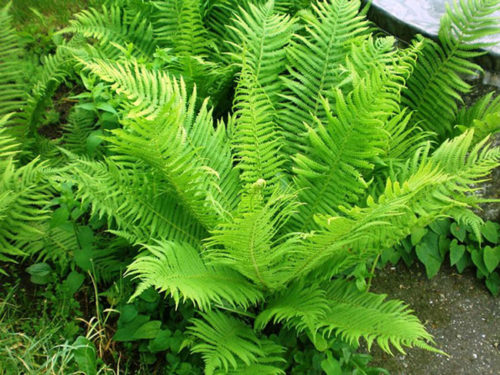
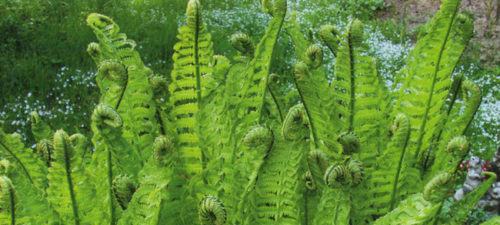
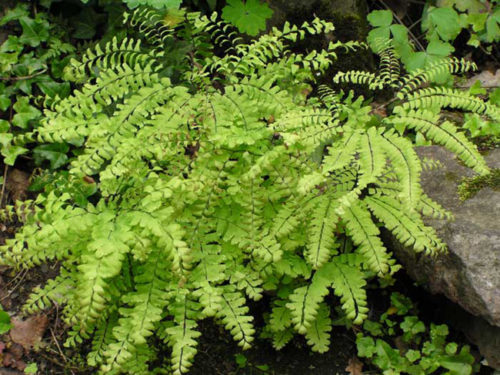
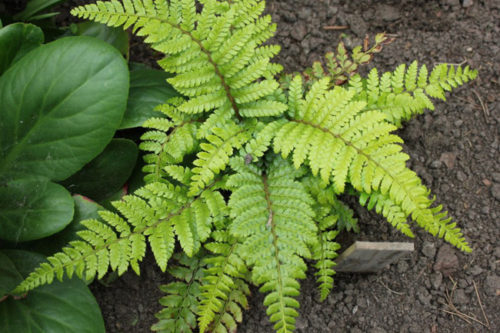
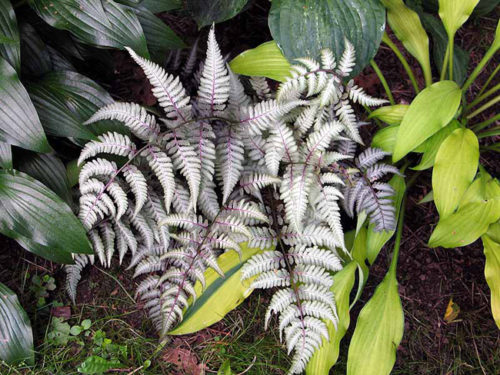
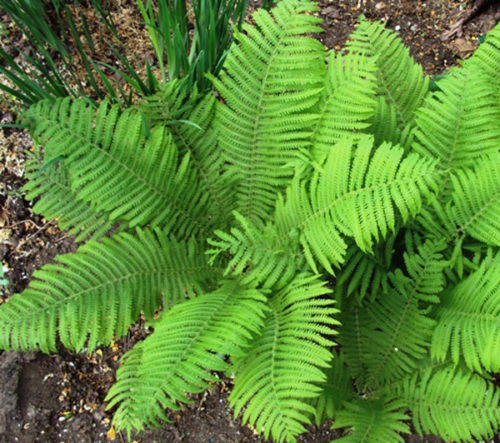
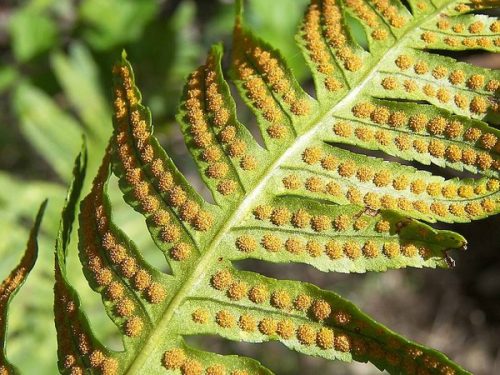
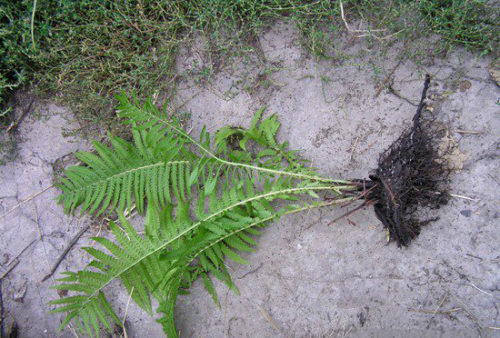
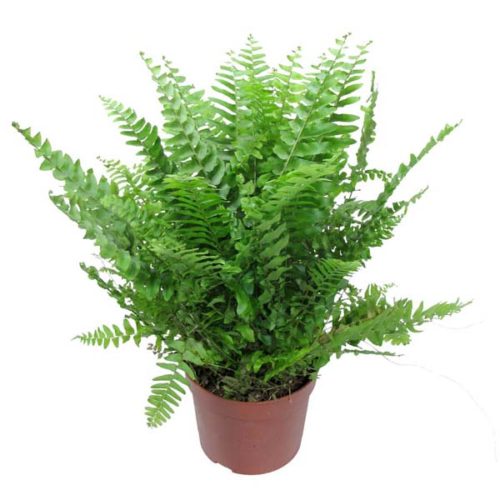

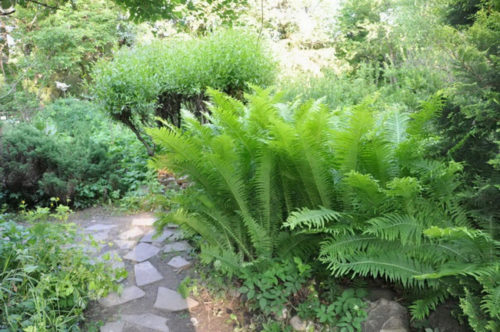
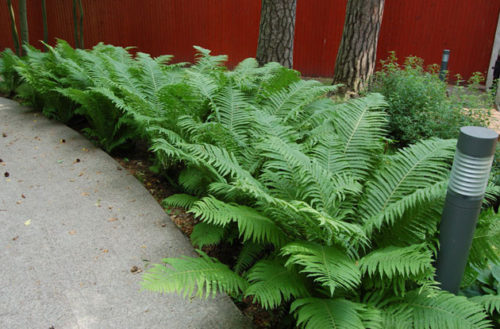
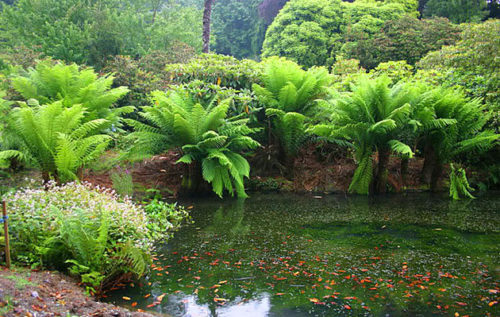
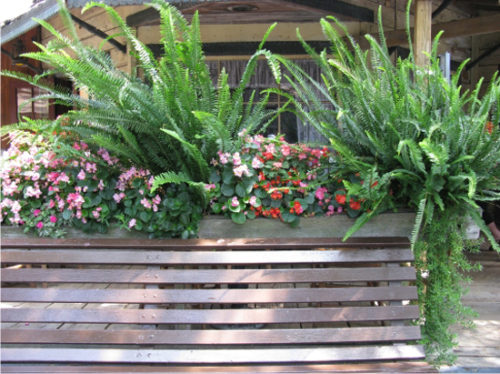
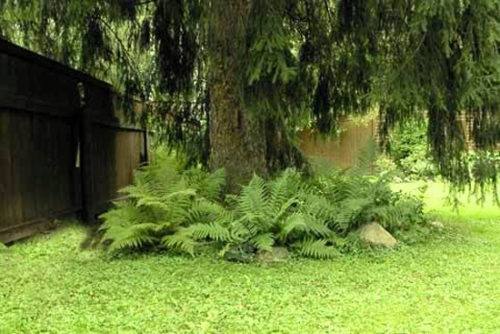












 Start a discussion ...
Start a discussion ...